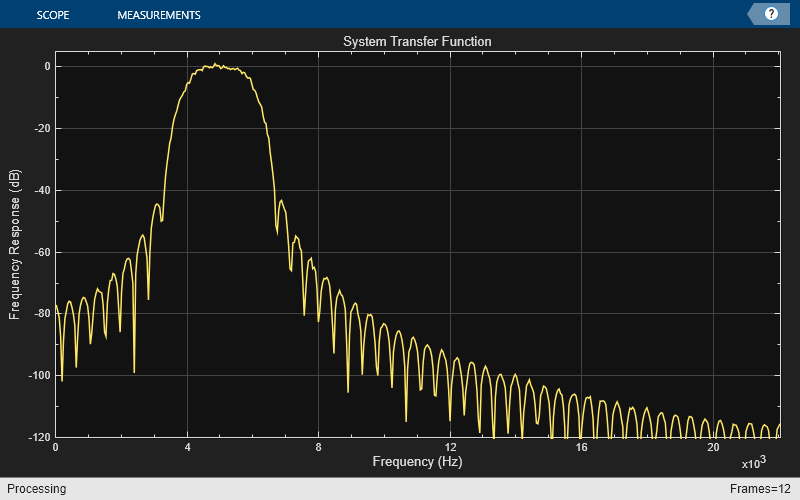dsp.VariableBandwidthFIRFilter
Variable bandwidth FIR filter
Description
The dsp.VariableBandwidthFIRFilter object filters each channel of the
input using FIR filter implementations. It does so while having the capability of tuning the
bandwidth.
To filter each channel of the input:
Create the
dsp.VariableBandwidthFIRFilterobject and set its properties.Call the object with arguments, as if it were a function.
To learn more about how System objects work, see What Are System Objects?
This object supports C/C++ code generation and SIMD code generation under certain conditions. For more information, see Code Generation.
Creation
Description
vbw = dsp.VariableBandwidthFIRFilter
vbw = dsp.VariableBandwidthFIRFilter(Name=Value)Name-Value pair arguments. Name is the
property name and Value is the corresponding value. For example,
FilterOrder=50 sets the filter order to 50.
Properties
Usage
Syntax
Description
Input Arguments
Output Arguments
Object Functions
To use an object function, specify the
System object™ as the first input argument. For
example, to release system resources of a System object named obj, use
this syntax:
release(obj)
Examples
Algorithms
References
[1] Jarske, P.,Y. Neuvo, and S. K. Mitra, "A simple approach to the design of linear phase FIR digital filters with variable characteristics." Signal Processing. Vol. 14, Issue 4, June 1988, pp. 313-326.
Extended Capabilities
Version History
Introduced in R2014aSee Also
Functions
freqz|filterAnalyzer|impz|info|coeffs|cost|grpdelay|outputDelay
